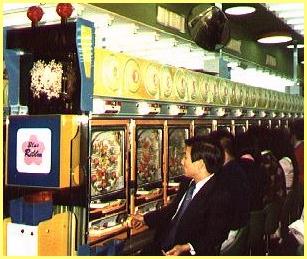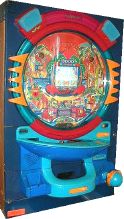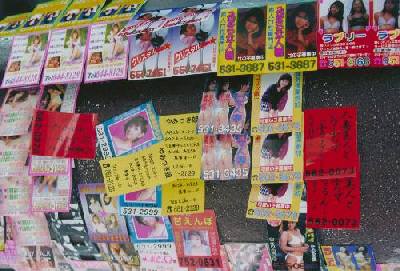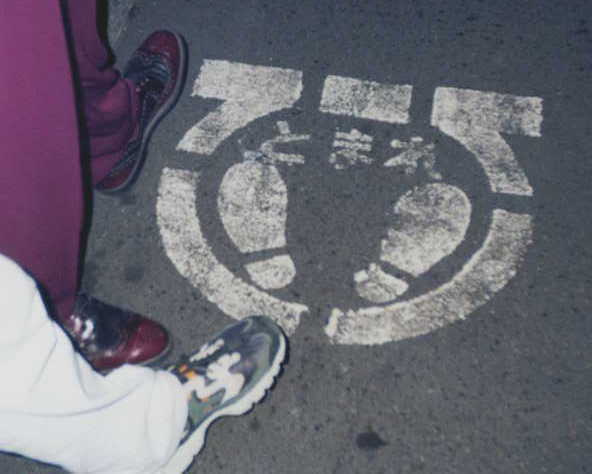4: Cosas que me sorprenden/Things that amaze me/私が びっくりした事
 El coste de vida: Tan caro y tan barato
El coste de vida: Tan caro y tan baratoNada más llegar a este país una de las cosas que más duele es acostumbrarse al precio de las cosas, que resulta, en general, mucho más caro que en España (por ejemplo). Para colmo, hay cosas cuyo precio puede llegar a duplicarse de un día para otro, y reducir su precio a la mitad tan rápido como había subido; es el caso de la fruta (por ejemplo).
A veces sí que se puede predecir, como al final del día, que rebajan los precios de los comestibles con riesgo de caducar. Sabiendo estos trucos, puede hacerse la compra algo más barata justo antes de que cierren el mercado (si es que queda algo en las estanterías). Igualmente con la ropa y otras cosas, las rebajas pueden llegar a ser del 70%, por no hablar de algunos de los precios de segunda mano que pueden llegar a ser el 10% del precio original (excepto los coches) -yo mismo compré esa bonita guitarra, con funda dura incluída, por tan solo 5000 JPY: Una locura.
Pero lo más impresionante de todo es lo de los electrodomésticos abandonados. Antes de venir había leído que mucha gente equipa por completo su casa sin apenas coste alguno, pero cuando conseguí el pedazo de cadena de música que uso cada día para despertarme, no me lo podía creer. Alguien en el dormitorio de Nacho pensó que, aprovechando que el CD se le había estropeado, ya era hora de cambiar de equipo HI-FI, y lo dejó, como tanta otra gente hace con vídeos y otros aparatos, abandonado en la entrada. Nacho pidió permiso, arregló el CD (porque es un manitas el chaval) y además se pegó la paliza de ayudarme a llevarla hasta mi dormitorio.
Living cost: So expensive and so cheap
UUFFFFFFFF ..... 日本語で... ムリ!!
 (Estoy vago pa' traducir.... alguna ayuda?)
(Estoy vago pa' traducir.... alguna ayuda?)
KO-GIRL: The new highschool look for girls In the last couple of years a whole new breed of japanese high-school girl (and young women) has emerged. As you can see, they usually wear super-high platform boots, long woolen leggings, and very short skirts, all of it in the most possible bright colours they can find. To add, they're usually darkly tanned, wear lots of makeup (specially shiny stuff around around the eyes and long eyebrushes), and have pretty wild hairdos. When school is in session they will be wearing their blue uniforms, but still, can be easily recognized. These are named KOGYARU, where KO stands for child, and GYARU, the japanese version for GIRL, but we personally call them COW-GIRLS, as a cowboy hat used to be part of their "uniform" at the time when we arrived in Japan (now it seems not to be fashion anymore).
In the last couple of years a whole new breed of japanese high-school girl (and young women) has emerged. As you can see, they usually wear super-high platform boots, long woolen leggings, and very short skirts, all of it in the most possible bright colours they can find. To add, they're usually darkly tanned, wear lots of makeup (specially shiny stuff around around the eyes and long eyebrushes), and have pretty wild hairdos. When school is in session they will be wearing their blue uniforms, but still, can be easily recognized. These are named KOGYARU, where KO stands for child, and GYARU, the japanese version for GIRL, but we personally call them COW-GIRLS, as a cowboy hat used to be part of their "uniform" at the time when we arrived in Japan (now it seems not to be fashion anymore).
But ko-girls are anything but children. Though mostly teenagers, a ko-girl matures much earlier than their classmates in terms of their taste, developing a confident "in-your-face" attitude that is strengthened by hanging around in groups. They are more like brash young women, kind of fearless and kind of rude. And they know what they like, which is to go downtown, buy funky fashion, take mini-pictures with their friends in the "perikura", and make constant use of the super-tool of their age: the KEITAI (cellular phone).
(Mostly copied from "Kyoto Visitor's Guide", March 2000)

UUFFFFFFFF ..... 日本語で... ムリ!!
 (Estoy vago pa' traducir.... alguna ayuda?)
(Estoy vago pa' traducir.... alguna ayuda?)
KEITAI: Cell-phonesEven for europeans, where so many people use them, it is quite shocking to see soooo many people with cell phones here. They talk through it anywhere: on street corners, cars, bycicles (YES), in parks, at the office, at home, in restaurants, and even on buses and trains, miss----- one of the maaaany things that can be heard from the speakers ("please refrain from using your mobile phone").
Really small and cool-looking, with many other functions rather than just sending voices from one place to another, the "generation 3" handy phones keep on spreading along Japan. In fact, keitai are a fixed part of daily life for over 50 million japanese people, young and old. Though it's young people the ones you can see with their beloved artifact more frequently, as they play with it when not talking.
According to one survey by a major bank, nearly 70% of young japanese people feel nervous if nobody calls them for an entire day. Which is to say, that the number of phone calls you get is a measure of popularity, or who knows what...
(Data copied from "Kyoto Visitor's Guide", March 2000)
UUFFFFFFFF ..... 日本語で... ムリ!!
 (Estoy vago pa' traducir.... alguna ayuda?)
(Estoy vago pa' traducir.... alguna ayuda?)
PACHINKO: That noisy game we all don't understandBefore i came to Japan i never heard this word, but, as many of my Vulcanus mates, as soon as i got in touch with someone of my company i was told not to aproach such a "dangerous place".
So i wondered... What is Pachinko?... it didn't took long till i realized there is at least one in front of every train station. It will be most likely be named Omega, King, Lucky, or Monaco, and when the automatic doors open a sound like metallic hail above the din of fast-tempo music and high decibeled anouncements can be heard; Too noisy, i thought. And never came in...
But curiosity is big, and when i started the internship in the company, meeting some people who looked like normal office workers during the day and then spent their nights (and money) in the Pachinko was too much to resist... I had to enter and see by myself what was going on there...
So i did, and crossed the smokey haze to see rows of people sitting patiently in front of vertical pinball machines. But not a normal kind of pinball machine; the size of the balls is much smaller, and the amount of them is... well, A LOT (about two balls per second can be shot).
After putting a quantity of balls in the upper of two horizontal trays, one turns the knob clockwise and the game begins: In quick succession the balls are shot up, arc toward the centre, and descend on a random path dictated by the vagaries of a hundred or so brass nails and a few little wheels, strategically placed on the vertical board. If any balls happen to land in the right places, the machine releases more into the upper tray.
Some of these people stared at the little screen in it, where a manga-style girl was getting naked as he made more and more points... But he wasn't even touching the machine!! The mentioned knob, that is situated at the lower right, controls the force of the impeller, and hence, the trajectory of the balls. He had something holding that controler in a fixed position...
 The requisites for a successful pachinko player are persistence, concentration, and a knack for choosing a good machine. Persistence is required because all too often a player may give up after losing a few thousand yen, whereupon the next person sits down at the same machine and wins steadily. But... here is the interesting thing; what you win is more balls that, officially, can only be changed with presents such as lighters, camera films, watches, and so on... Getting some money back is illegal, because Pachinko is not considered gambling. So, instead of exchanging the balls for normal goods, you get a special "gift token" (called KEIHIN), then you can go to the corner, where a person behind a small window does the favor of buying back the Keihin for cash, though at a reduced rate. The owners of the pachinko-parlor and the keihin-redemption-company are different, and thus, no accusation of gambling can be made. (Of course, this is the official version, but everybody knows there is a mafia behind all these business whose name is YAKUZA, but i don't want to research on this subject... Instead, i can send you to the web page of Ed Jacob (qUirKy JaPan hOmE pAgE), who wrote maybe something like me but, here is the interesting part, got an e-mail from a foreigner (Bob) who did get into the world of Pachinko. You'd better go and read this interesting story: GO!
The requisites for a successful pachinko player are persistence, concentration, and a knack for choosing a good machine. Persistence is required because all too often a player may give up after losing a few thousand yen, whereupon the next person sits down at the same machine and wins steadily. But... here is the interesting thing; what you win is more balls that, officially, can only be changed with presents such as lighters, camera films, watches, and so on... Getting some money back is illegal, because Pachinko is not considered gambling. So, instead of exchanging the balls for normal goods, you get a special "gift token" (called KEIHIN), then you can go to the corner, where a person behind a small window does the favor of buying back the Keihin for cash, though at a reduced rate. The owners of the pachinko-parlor and the keihin-redemption-company are different, and thus, no accusation of gambling can be made. (Of course, this is the official version, but everybody knows there is a mafia behind all these business whose name is YAKUZA, but i don't want to research on this subject... Instead, i can send you to the web page of Ed Jacob (qUirKy JaPan hOmE pAgE), who wrote maybe something like me but, here is the interesting part, got an e-mail from a foreigner (Bob) who did get into the world of Pachinko. You'd better go and read this interesting story: GO!
By the way, Pachinko was first commercially developed in Nagoya, after the World War II. And God knows how many millions of people (both men and women) have spent the time and money of their families there...
(Data are copied from "Kyoto Visitor's Guide", March 2000)
UUFFFFFFFF ..... 日本語で... ムリ!!
 Cómo titular esto?
Cómo titular esto?Esto son anuncios que se pueden encontrar en cualquier cabina de teléfonos del centro de la ciudad. Pero eso no es todo, hay señores con explícitas pancartas frente a hoteluchos invitando a los viandantes (hombres) a recibir un "masaje".
También pueden verse con frecuencia sugerentes fotografías junto a una lista de precios por tiempos (media hora, una hora...). Por no hablar de las que salen en los periódicos que a veces la gente lee en el metro (o más fuerte aún, en los anuncios que cuelgan del techo de los vagones).
Salvo por el hecho de que todo esto también puede verlo cualquier niño pequeño, no me parece del todo mal un poco de libertinaje en este estilo (no voy a extenderme filosofando sobre estas cosas, no aquí ni ahora), pero lo que resulta sorprendente es que la prostitución está prohibida en este país !!
(Judge by yourselves, i'm too lazy to translate)
UUFFFFFFFF ..... 日本語で... ムリ!!
 Peatón, pare
Peatón, pareComo lo véis, un "stop" para peatones. Los hay a cientos, en los cruces con callecitas y callejones. También tienen algunos pintada otra señal de stop para bicicletas, y c&oaucte;mo no, la de los coches... No es un poco de malgasto de pintura?
Me falta preguntar si es que en esos cruces ha habido algún accidente y que han optado como medida preventiva para próximas ocasiones lo de la señalita... pero no sé, no sé...
Pedestrian stopAs you see it, a stop sign for pedestrians. There are hundreds of them in the crossings with small streets and alleys. Some of them have another stop sign for bicycles painted, and of course, the one for the cars... Isn't that a bit overwasting paint?
I still have to ask if those crossings have been scenary of some accident and the several stop-paintings some measurement taken to prevent it from happening again... but i don't know what to think...
歩行者の とまれそう ですね。人に とまれって言うの 記号。小さい道の 角に たくさん 見ました。そのとなりに 自転車の とまれも 見たことが あります。ペイントの ろうひ じゃないんですか?
たぶん その角で 事故が おこりました、それから もう一度 おこるかの ふせぐ ために、記号を 書いてなりましたかなあ。。。そうですか。。。
 (Estoy vago pa' traducir.... alguna ayuda?)
(Estoy vago pa' traducir.... alguna ayuda?) In the last couple of years a whole new breed of japanese high-school girl (and young women) has emerged. As you can see, they usually wear super-high platform boots, long woolen leggings, and very short skirts, all of it in the most possible bright colours they can find. To add, they're usually darkly tanned, wear lots of makeup (specially shiny stuff around around the eyes and long eyebrushes), and have pretty wild hairdos. When school is in session they will be wearing their blue uniforms, but still, can be easily recognized. These are named KOGYARU, where KO stands for child, and GYARU, the japanese version for GIRL, but we personally call them COW-GIRLS, as a cowboy hat used to be part of their "uniform" at the time when we arrived in Japan (now it seems not to be fashion anymore).
In the last couple of years a whole new breed of japanese high-school girl (and young women) has emerged. As you can see, they usually wear super-high platform boots, long woolen leggings, and very short skirts, all of it in the most possible bright colours they can find. To add, they're usually darkly tanned, wear lots of makeup (specially shiny stuff around around the eyes and long eyebrushes), and have pretty wild hairdos. When school is in session they will be wearing their blue uniforms, but still, can be easily recognized. These are named KOGYARU, where KO stands for child, and GYARU, the japanese version for GIRL, but we personally call them COW-GIRLS, as a cowboy hat used to be part of their "uniform" at the time when we arrived in Japan (now it seems not to be fashion anymore). El coste de vida: Tan caro y tan barato
El coste de vida: Tan caro y tan barato





